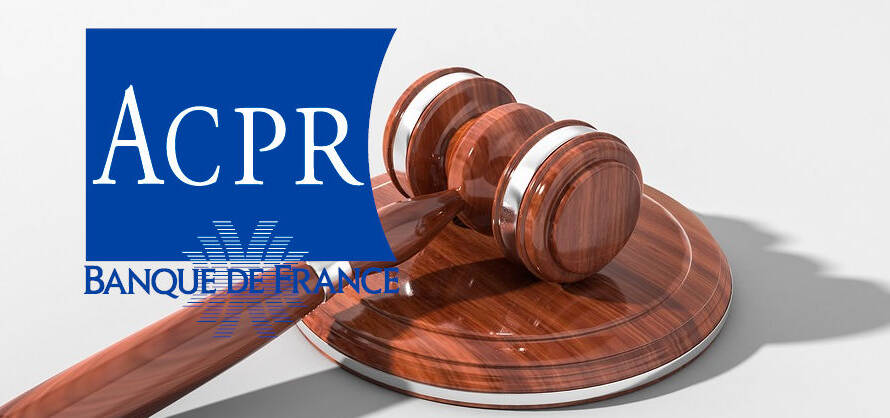While for many, corruption remains the prerogative of certain faraway and more or less democratic countries, this conception is quite mistaken!
Corruption also knows inflation
According to official statistics published in March 2024 by the the French Anti-Corruption Agencypolice and gendarmerie services recorded no fewer than 829 "offenses against probity" in 2023, compared with 760 in 2022, representing a 9% increase in acts of corruption. These offences include illegal interest-taking, embezzlement of public funds, favoritism, etc. This type of corruption accounts for a third of all offences against probity.
A diffuse phenomenon...
But the fact is undeniably much deeper than what is measured: according to the the Vécu et ressenti en matière de sécurité (VRS) survey, 283,000 people aged 18 and over living in mainland France declared having been confronted with a situation of corruption in the workplace in 2021, i.e. 0.6% of the total adult population. Unfortunately, less than 1% of the individuals concerned report having lodged a complaint. Worse still, according to Eurobarometer 2022, 64% of French people surveyed believe that corruption is present in France, and 4% have even been confronted with it in the past year!
... and multi-sectoral!
And again according to the Agence Française Anticorruption, it concerns all sectors: 46% public administration, 11% construction, 4% transport and warehousing, 4% real estate, 3% water production and distribution, sanitation, waste management and depollution, 3% agriculture, 2% finance and insurance, etc. In 23% of European companies, corruption cases have jumped by more than 20%, according to Forrester. Forrester !
Human flaws as a gateway
Fortunately, the Sapin II Law, which came into force in 2017, has set a number of obligations to limit the phenomenon and promote transparency. Still, we're a long way from eradication! Remember, when it comes to corruption like many others, four postulates apply:
- Every organization is made up of individuals, a non-zero proportion of whom are likely to be receptive to acts of corruption, to varying degrees. Ethics and honesty can only go so far, if the price is right! It's human nature...
- An individual's weakness is always liable to be discovered, sooner or later.
- Anyone who discovers this human flaw may be tempted to use it to their own advantage.
- If the risks are low, this flaw will inevitably be exploited for corruption.
Fight corruption, take action!
The Sapin 2 law requires companies with at least 500 employees to implement preventive measures against acts of corruption. But in concrete terms, how can we move towards zero corruption? An action plan must comprise at least five stages, based on three key principles: vigilance, monitoring and traceability.
Define a code of conduct for your employees, customers and suppliers
Ignorance of a phenomenon and its possible ramifications is the best way to open the door to corruption. Everyone needs to know and understand the principles adopted by the company, as well as the associated sanctions: to know where they stand and avoid arguments such as: "I didn't know it was forbidden...". Clearly setting out the rules upstream, possibly with training, helps prevent corruption and channels potentially risky behavior.
Assess internal risks
Not all activities and professions within an organization are equal when it comes to the risk of corruption. For example, the purchasing function, one of whose missions is to manage calls for tender and relations with suppliers, will find itself more exposed than a human resources, logistics or production department. Hence the importance of mapping risks specific to each sector or department, in order to determine which type of corruption might be more prevalent, and where to focus prevention and monitoring efforts.
Assess the integrity of third parties
Just as you need to know your customers, under the KYC (Know Your Customer) principle, it's essential to know the third parties (KYS: Know Your Supplier) with whom your company has dealings, especially suppliers. These are prime sources of corruption when it comes to influencing investment decisions.
Detect corruption attempts with a warning device... before it's too late!
Code of conduct, mapping and evaluation of third parties are necessary, but not sufficient: the fight against corruption requires a system of feedback, as far upstream as possible. This relies on both automatic detection (e.g., checking for inconsistencies in supplier payments) and human alerts, for example in the form of a "note of surprise" or a dedicated feedback channel to management and senior management, enabling the degree of corruption to be assessed.
Formalize internal control and audit of accounting transactions
The fight against corruption cannot be effective with precise measures alone: it's a day-to-day job! One best practice is to formalize controls on transactions and cash/accounting flows, in order to identify any anomalies and investigate their causes.
Automate to reduce uncertainty
In addition to these five principles, we must add a sixth: equip ourselves with a solution that facilitates and automates the entire anti-corruption process.
Why choose a software solution?
Fighting corruption: quality data on the front line
Fighting corruption requires the growing processing of digital data, which only a software solution can absorb and manage efficiently. The development of technology, notably Big Data and artificial intelligence, is now well suited to this task. RegTech players are also offering mature solutions to meet these needs.
Eliminating human failings
Humans are by definition fallible, so software is a better solution for minimizing bias and error.
Adapting to new forms of corruption
Corruption is multi-faceted and techniques are becoming more complex, in an environment where digital payments and cryptocurrencies are making it difficult to detect corruption offenses. A software solution makes it easier to detect these changes.
360° compliance
In addition to the fight against corruption-related offences, compliance covers a wide range of areas: money laundering, financial fraud, identity checks (Know Your Customer), export controls, compliance with trade embargoes, etc. A software solution covers all needs in all types of compliance corruption.
Limit costly human resources
The fight against corruption represents a major expenditure of resources. It is the largest budget item in this field. Hence the need to automate and carry out as many tasks as possible using a suitable software solution.
Features for every need
A turnkey software solution offers a wide range of functionalities covering all regulatory compliance needs (real-time detection, traceability, third-party integrity checks with fine granularity, false-positive limitation, integration with third-party solutions via APIs, customized reports, user profile definition, service level agreements, etc.).
Want to know how AP Solutions IO can help you fight corruption? Request a demo!



1 Comments
Comments are closed.